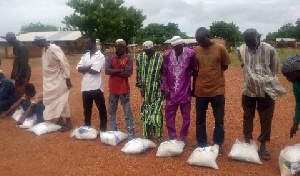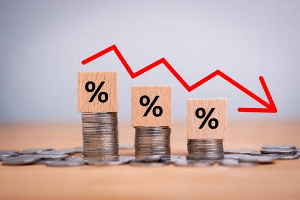It is here again—Farmers day. A day designated as a national holiday to supposedly honour the country’s hard-working farmers for their invaluable contribution to the economy. This day has been observed since 1988 on every first Friday of December.
This day is supposed to make the ordinary farmer feel proud of his work and what he has contributed to the national economy for a period of one year. But the reality on the ground is that, this day brings untold misery to many farmers around the country, even those selected to be honoured, as successive governments have only paid lip service to their welfare.
In 2014, in the Eastern Region, farmers who were adjudged to be exemplary in their fields were each awarded with ‘two bars of Key Soap, three packets of toilet paper, three bottles of Joy Daddy Bitters and three cutlasses’. Yes, that was the farmer’s package for his contribution to the economy for the entire year.
It is not surprising, therefore, to see that the agriculture sector, which has been touted as the backbone of the economy and employs more than half the workforce, has seen significant retrogression over the years, overtaken by the services sector which is now the main driver of the economy.
To put it in a much appreciable perspective, as recently as 2013, agriculture grew in the first and second quarters by 24 and 50.8 percent respectively, with the hope that it will continue in that direction.
But quite poorly, growth took a sharp nose dive into the negatives as it recorded -12.6 and -0.6 in the last two quarters of that year.
The negative growth continued in 2014 until the third quarter when it grew by 28 percent, making it the first time it grew past industry and services since quarter four of 2012. Since then, however, it has never grown past the other two sectors, even though it has moved from the negatives.
In the second quarter of this year, agriculture grew by 3.4 percent whereas industry and services grew by 19.3 and 5.6 percent.
The situation is even more dispiriting when the sector’s contribution to GDP is considered. Apart from the third quarter of 2009 when it became the largest contributor to GDP by recording 41.9 percent, compared to 17.6 and 40.5 percent by industry and services, it has never hit that feat again.
In fact, the last GDP figures released by the Ghana Statistical Service shows that, agriculture contributed 22.6 percent to GDP, whereas industry and services contributed 24.2 and 53.2 percent respectively.
This retrogressive growth has been attributed to a number of factors. Ranked high among them is the age-old canker of nonexistent financing. Many financial institutions consider the sector high-risk, hence, few financial products are adapted to the needs of farmers and private sector agribusiness companies. In fact, most farmers, after years of farming, still operate on small scale basis due to financial constraints.
Another serious challenge of farmers is lack of farming, technical and managerial skills. In this technologically-driven world, most farmers still use traditional and outmoded methods of farming, with cutlasses and hoes, to clear acres of farm lands.
Farmers also continue to harvest manually, rather than use combine harvesters, among others.
Again, inadequate or lack of access to irrigation all year round has bogged down farmers for so long. Modern irrigation systems are absent in many farming communities, leaving farmers to rely on the rainy season, which has become highly unpredictable, these days.
Besides the above challenges, farmers constantly battle post-harvest losses, poor road networks, lack of ready market, and land litigation, just to mention a few.
All the aforementioned challenges have served as a disincentive to farmers and have made the entire agriculture enterprise unattractive to the youth, who are battling unemployment day in day out.
In fact, most young people even detest or dread the idea of becoming farmers, as the living conditions of farmers and their families scare them.
That is not to say that some action has not been taken by successive governments to try and address some of these challenges.
In terms of finance, to lure banks into the sector, the Bank of Ghana, in October 2016, launched the Ghana Incentive-Based Risk Sharing System for Agricultural Lending (GIRSAL), which meant to provide a GH¢100million guarantee for lenders to the agric sector.
The objective of GIRSAL, the BoG said, is to reduce overall risks in agricultural financing to boost agricultural production, productivity and export, with the aim of increasing foreign exchange earnings, supporting import substitution, and promoting economic growth.
However, it is yet to be seen how this intervention will impact the operations of the ordinary farmer and the agriculture sector as a whole.
On the issue of irrigation, in 2010, Cabinet under late President Atta-Mills, approved the National Irrigation Policy and Strategy Measures, aimed at opening up the investment space for intensified and diversified irrigated crop production in Ghana.
Once again, this policy has not seen any significant progress, as farmers continue to rely on nature for irrigation.
Every new government has goodwill. People hope for better conditions under every new government, and the case is not different for the Akufo-Addo-led government, which has given Ghanaians, with its catchy phrases for various forms of intervention, a lot of reason to be hopeful.
The 2018 Budget has unveiled a ‘Marshall Plan for Agriculture (MPA)’, aimed at revamping the country’s abysmally performing agriculture sector to make it the true backbone of the economy.
Some of the initiatives under the plan include registering a total of 500,000 farmers under the flagship Planting for Food and Jobs programme, and also recruiting 2,700 extension agents to support it.
Again, the government intends to distribute 200 tractors and matching implements, and 1,000 power-tillers and walking tractors to enhance agric mechanisation.
To address the challenges of irrigation, the Akufo-Addo government has said it will, in 2018, continue to facilitate and promote double-cropping by constructing 50 small dams and dugouts – making available an additional 147ha of irrigable land for crop production.
To also improve livelihoods of livestock farmers in all ten regions and increase meat production, 2,000 livestock farmers will be supported with 70,000 small ruminants (sheep and goats).
The ministry, according to the 2018 budget, will also support six National Livestock Breeding Stations to produce and distribute 200 crossbred heifers, 1,700 improved pigs, and 100,000 cockerels.
In addition to the aforementioned, the Akufo-Addo Programme for Economic Transformation (AAPET) is expected to establish a GH¢400million fund to de-risk the agriculture and agribusiness sector through sustainable agriculture financing and crop insurance schemes.
The AAPET is aimed at mobilising and leveraging public, private, and public-private partnership investments; modernising and transforming agriculture; and developing major infrastructure projects that support the agricultural zones of the country and industrialisation agenda of government.
It will also support the development of agribusiness start-ups through the establishment of a grant funding facility, and abolish duties on some agricultural produce processing equipment and machinery.
Many commentators have hailed the plans as being truly transformational in their spirit. But whether they will be implemented, as they should, to bring about the real transformation the agriculture sector needs, and make the Farmers Day, really, a day of honour to the country’s hard-working farmers, remains to be seen. Time, as the adage goes, will tell.
Business News of Thursday, 30 November 2017
Source: thebftonline.com













